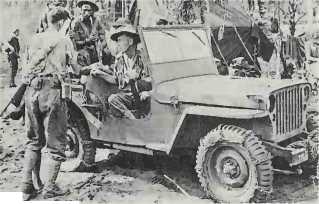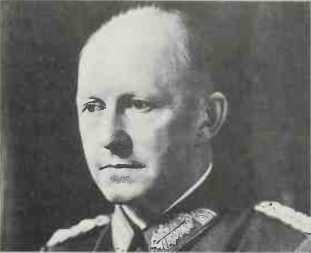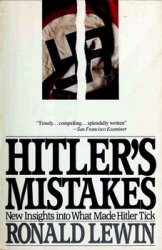Jackson, Adm of the Fleet Sir Henry Bradwardine (18551929). Br. Pioneer of radio, second in importance only to Marconi, with whom he collaborated from 1896. Responsible for the Royal Navy’s early lead (first sets purchased in 1900) in this field. Much less successful as the First Sea Lord between Fisher and Jellicoe (May 1915-December 1916).
Jadar river, Battle of the see
SERBIAN CAMPAIGN.
Jamestown Line. This was a defensive position established by UN forces during the Korean War. It ran from just beyond the Imjin river in the west to the north of Chorwon in the centre. It was seized in October 1951 as part of a series of operations launched by Eighth Army to improve its military position and maintain pressure on the enemy.
Japan bases for UN Command and forces. Japan served as a privileged sanctuary for un forces during the Korean War, playing the same role as Manchuria on the communist side. The US maintained an extensive system of army, naval and air bases in Japan which it retained under a mutual security pact ratified along with the Japanese Peace Treaty of September 1951. Without this network it would have been impossible to fight the war.
Japan, logistic support by. After the Korean War broke out, Japan provided logistical support for American forces engaged there through the US Special Procurements Program. American war orders created an economic boom which provided the basis for postwar Japanese prosperity.
Japan, plan to invade (1945). The fanatical resistance displayed by the Japanese defenders of the Pacific islands had given clear indications of the difficulties inherent in an Allied invasion of the home islands. It was therefore hoped that the attritional effect of the Allied strategic air offensive and naval blockade would undermine the Japanese economy to such an extent that they would sue for peace. But contingency plans for an amphibious assault were still required, and in April 1945 Gen MacArthur and Adm Nimitz instructed their staffs to draw up studies for the invasion. They produced a scheme for a two-stage operation beginning with a landing on the island of Kyushu on November 1 1945, followed, on March 1 1946, by an assault on the main island of Honshu. The first attack, codenamed “Olympic”, was to be carried out by Gen Krueger’s veteran Sixth US Army, numbering some 650,000 men, supported by the 3rd and 5th Fleets under Admirals Spruance and Halsey. Suicide attacks by Japanese aircraft and naval vessels were anticipated, while it was clear that the second assault, Operation “Coronet”, would be confronted by the entire Japanese nation in arms. For this invasion, two American armies, the First and Eighth, would land on the Kanto Plain on the east coast of Honshu, backed up by a rapidly escalating reinforcement programme. Japan surrendered before the attacks were due to be launched. MS.
Jarama, Battle of (February 1937), Spanish Civil War. Franco’s offensive south of Madrid to cut the Valencia road began on February 5. His force of 25,000 men backed by Col von Thoma’s Panzer Mk Is and 88mm guns about to be battle-tested for the first time, attacked westwards from the Madrid-Aranjuez road. The Pindoque bridge over the Jarama was taken in a surprise attack six days later, and the Nationalist forces were soon attacking the International Brigades’ hurriedly prepared positions in olive groves on the east bank. The ensuing battles of attack and counterattack caused heavy casualties, up to 20,000 killed and wounded on both sides. The Nationalist side nevertheless developed their inter-arm cooperation with effective close-support bombing by the Condor Legion’s Junkers 52 and the skilful use of Fiat fighters by Nationalist pilots. AB.
Java Sea, Battle of (February 27
1942). Japanese naval victory off Indonesia against an abda fleet. Both forces consisted of cruisers and destroyers with no heavier ships present, although the Japanese had air superiority. The
Japanese commander, Takagi, had the most powerful ships, the heavy cruisers Nachi and Haguro] the Allies’ heaviest cruiser, uss Houston had one 8in turret out of action and HMS Exeter was less powerful. However the Allies had three lighter cruisers (the Dutch De Ruyter and Java plus hmas Perth) against the Japanese two. Fourteen Japanese destroyers were matched against a mixed bag of US (4), British (3) and Dutch (2) destroyers. The weary Allied force under the Dutch Rear Adm Doorman was handicapped by lack of experience in operating together plus inevitable communications difficulties. The well-trained and coordinated Japanese force won an extra advantage from their use of spotter planes.
The Japanese force was protecting an invasion convoy approaching Java. Battle began in mid-afternoon with a long-range exchange of fire. As the forces closed, Exeter was badly hit and had to retire. Then one Dutch and one British destroyer were lost. Houston received some damage, but the Allied force otherwise managed to survive the intermittent exchange of gunfire and torpedoes until dusk. A British destroyer then sank on a Dutch mine and, on relocating the intact enemy, both Dutch cruisers were torpedoed and sunk. Doorman was lost, but had already ordered the dispersal of his remaining ships. The loss of all three remaining cruisers followed rapidly in the Battle of the Sunda Straits. CJWICD.
Jean Bart. French battleship. Richelieu class. Only 77 percent complete when the Germans overran France in 1940; escaped under her own power to Casablanca. Badly damaged by American bombardment in the 1942 landings. Not completed until 1949, scrapped
1970.
Jedburgh teams, soe/oss joint ventures. Three highly trained men - one British, one American, one local — took part in each of 93 ventures, parachuting into France, Belgium, Holland or Norway to provide training, leadership, advice and arms drops for resistance groups during the Allied landings in Normandy in June
1944.

Jeep: all-purpose workhorse
Jeep. Quarter-ton, 4-wheel-drive “command and reconnaissance car”, developed by Willys for the US Army from 1940: name comes from General Purpose vehicle. Total wartime production: c640,000.
Jellicoe, Adm of the Fleet Earl
(1859-1935). Br. c-in-c. Grand Fleet at Jutland, First Sea Lord 1916-19. A commander charged with a duty which afforded him the opportunity of a famous victory, which might not much have changed the subsequent course of the war, and also the risk of a defeat, which would have done so. On his own admission, he missed one of the greatest opportunities a man ever had: victory at Jutland on the scale of Nelson’s at Trafalgar. But Jellicoe’s real task was to ensure that, whatever actions might occur, the Grand Fleet would remain superior to the High Seas Fleet, for if that balance was lost, Britain, an inferior military power, was also lost. As Churchill put it, Jellicoe was the man who had the opportunity of losing the war in a day.
Jellicoe had made meticulous plans for the action with the German High Seas Fleet. He had anticipated that his freedom of action would be restricted by the threat of torpedoes and mines and he had rehearsed the means by which, notwithstanding, he believed that the German main fleet could be brought to action and destroyed. In the event, two factors weighed against his preparations; low visibility which made Scheer’s movements obscure, and abysmal communications, which meant that Jellicoe’s intelligence of them, once spotted, was late and inaccurate.
In the final reckoning Jellicoe’s calculated caution was justified by the facts that the German fleet did not come out again and that his apparently more daring successor.
Beatty, when saddled with Jellicoe’s responsibilities, followed a distinctly similar policy of caution. ANF.
Jerusalem, capture of (1917). Following the British capture of Gaza, Gen Allenby, aspiring to take the Holy City of Jerusalem by Christmas, ordered yet another offensive. The advance began on November 18 1917 in cold, wet weather. The fighting ebbed and flowed over the Judean hills with the 75th Division capturing the strategically important village of Nabi Samweil on the 21st. Counterattacks frequently forced the advance to halt, but only at the expense of heavy Turkish casualties. At last Gen Chetwode’s XX Corps came up against the Turkish Seventh Army’s defensive ring around Jerusalem. At dawn on December 8 the British forces attacked, making sufficient headway against the Turkish strongpoints to force a withdrawal. This evacuation remained largely unnoticed and it was left to two infantry sergeants to discover on the morning of the 9th that the city was undefended. British casualties in men and animals had been high but the Turks had also suffered badly and lost valuable reserves that they had planned to employ in a counterattack in Mesopotamia. Above all, the capture of Jerusalem offered an important boost to morale at a time when the Allies had encountered major setbacks on other fronts. MS.
Jervis Bay see fegen, capt Edward FOGARTY.
Jeschonnek, Gen Hans (1899
1943). Ger. Originally an infantry officer in the Imperial German Army, Jeschonnek transferred to flying duties in 1917, serving with Erhard Milch as a fighter pilot in Jagdstaffel 40. Between the wars he was directly involved in the formation and expansion of the Luftwaffe, and he became its cos, in succession to Stumpff, in 1939. Like Hitler, whose views he rarely questioned, Jeschonnek saw aircraft primarily as an offensive weapon and championed the dive-bomber and close air support for ground troops, but he allowed development and production, particularly of fighter aircraft, to stagnate until late 1942 - a failure which subsequently placed the Luftwaffe at a severe disadvantage. Unaccustomed to defensive operations, he came under increasing criticism from Hitler and Goring as the Allied bombing offensive against Germany grew in scale and intensity. He shot himself on August 18 1943, immediately after the major Allied attacks on Schweinfurt, Regensburg and Peenemunde. PJS.

Jodi: hanged, then exonerated
Jodi, Gen Alfred (1890-1946). Ger. After service as a frontline artillery officer in World War I, Jodi became a member of the Reichswehr’s General Staff. He was an early admirer of Hitler. In April 1939 he was appointed Chief of Wehrmacht Operations Staff (Wehrmachtfuhrungstab), thus playing a major role in the direction of Germany’s strategy during World War II. He was Hitler’s closest military adviser, although the enduring relationship owed more to his powers as a courtier that his strategic insight. Like Keitel, Jodi rarely argued against Hitler’s plans and contented himself with implementing his superior’s orders. Inevitably Jodi became distanced from the realities of the war and, rather than listen to the advice of frontline commanders, followed Hitler’s often fanciful interpretation of the strategic situation. During the Ardennes offensive of 1944-45, Jodi conspicuously failed to correct Hitler’s faulty assessment of the material needed. Ironically, one of Jodi’s few active roles in the war was to sign the surrender at Reims on May 7 1945 when he represented Adm Donitz. Convicted of war crimes at Nuremberg, he was hanged on October 16 1946, but in 1953 was exonerated by a German de-Nazification court. MS.




 World History
World History![Stalingrad: The Most Vicious Battle of the War [History of the Second World War 38]](/uploads/posts/2015-05/1432581864_1425486471_part-38.jpeg)









